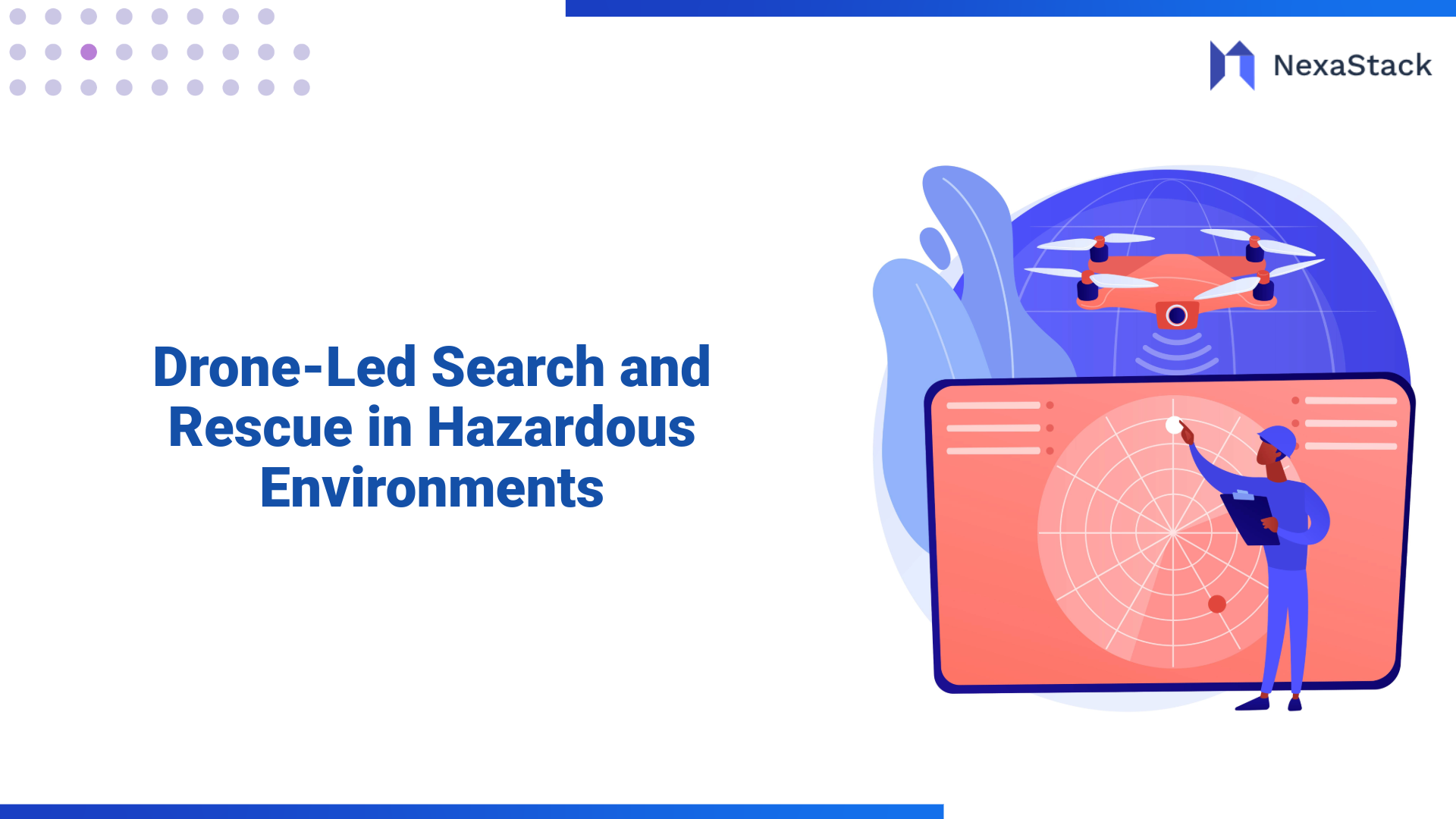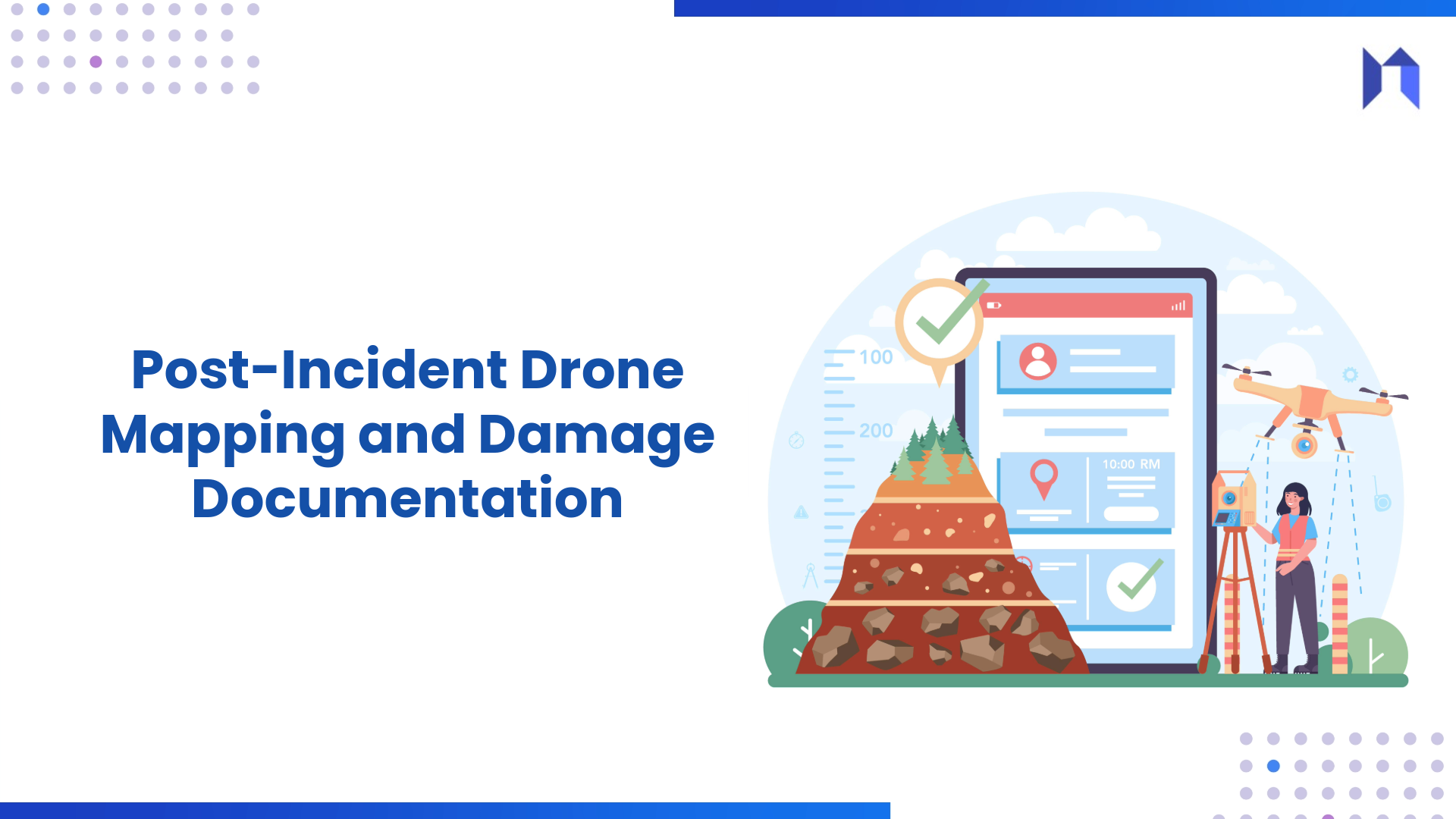Wildfires have become one of the most devastating natural disasters affecting communities, ecosystems, and economies worldwide. As climate change intensifies temperature fluctuations, droughts, and wind patterns, fire management agencies face increasing difficulty in predicting how a fire will spread. Traditional firefighting methods, although essential, often lack the predictive precision and real-time insight necessary to make swift, informed decisions.
To tackle these challenges, emerging technologies such as drones, AI-driven simulation models, and digital twins are revolutionizing the way wildfire risk is understood, forecasted, and mitigated.
Nexastack, the Agentic Infrastructure Platform, plays a critical role in this transformation. By integrating drone-based data acquisition, machine learning models, and physics-based simulations into a unified environment, Nexastack enables agencies and organizations to dynamically forecast fire behavior across diverse terrains, weather conditions, and fuel sources.
This use case explores how Drone-Powered Fire Spread Forecasting and Simulation can be achieved using Nexastack’s Simulation Drone Agent and Digital Twin orchestration framework to enhance situational awareness, improve emergency preparedness, and support autonomous firefighting strategies.
Unpredictable Fire Dynamics and Limited Situational Awareness
Wildfires spread in complex, nonlinear ways — influenced by variables such as temperature, wind speed, humidity, topography, and vegetation type. Traditional predictive models rely heavily on historical data and static assumptions, which can lead to inaccuracies when conditions change rapidly.
Key Challenges:
-
Lack of real-time data:
Fire behavior changes minute by minute, but most monitoring systems rely on periodic satellite updates, which have limited resolution and latency. -
Inadequate environmental sensing:
On-ground sensors cannot cover broad forest areas effectively, especially in remote or mountainous terrain. -
Limited forecasting capability:
Existing models fail to integrate multiple data sources (drone footage, weather sensors, and terrain models) to provide actionable forecasts. -
Reactive decision-making:
Firefighting operations often react after ignition, rather than predicting and simulating the likely path of fire spread. -
Safety and cost constraints:
Deploying manned aircraft for aerial surveillance in hazardous conditions increases both operational cost and risk.
To overcome these limitations, fire management requires an AI-driven, autonomous forecasting system capable of learning, adapting, and simulating dynamic environmental conditions — all while ensuring secure data collection and real-time decision support.
Simulation Drone Agent in Digital Twin
Nexastack bridges the gap between real-world sensing and virtual simulation through its Agentic AI architecture. At the center of this use case is the Simulation Drone Agent, a specialized AI agent within the Nexastack Digital Twin Environment designed to collect environmental data and simulate fire spread scenarios using advanced machine learning and physics-based models.
Core Concept
-
Simulation Drone Agent: Operates autonomously to gather thermal, visual, and atmospheric data using onboard sensors. The agent synchronizes with Nexastack’s digital twin of the environment — a virtual replica of the physical terrain — to simulate the real-time trajectory of the fire.
-
Digital Twin Integration: Nexastack’s digital twin framework replicates forests, terrain, vegetation, and infrastructure in high fidelity. This twin acts as a dynamic simulation layer where the drone data is continuously streamed and analyzed.
-
Hybrid Simulation Models: Nexastack fuses physics-based models (for heat transfer, wind interaction, and combustion dynamics) with machine learning-based models (for pattern prediction and adaptive learning). The combination enables predictive mapping of fire propagation and behavioral forecasting under various environmental scenarios.
-
A2A Orchestration (Agent-to-Agent): The Simulation Drone Agent collaborates with other agents, such as the Weather Agent, Risk Analysis Agent, and Response Planning Agent, to optimize the simulation pipeline. Together, they form a self-learning, adaptive ecosystem that evolves as more data is captured, improving accuracy with each operation.
Architecture Overview

The Drone-Powered Fire Simulation Workflow within Nexastack unfolds in four key layers:
1. Data Collection Layer
Autonomous Drone Fleet equipped with:
-
Thermal and infrared sensors to detect temperature anomalies.
-
LiDAR and visual cameras for terrain and vegetation mapping.
-
Gas and smoke sensors for chemical composition analysis.
Real-time data streams are transmitted securely to the Nexastack cloud or edge node via private AI infrastructure.
2. Contextual Data Fusion Layer
Sensor data is merged with external sources such as:
-
Weather models (wind speed, direction, humidity)
-
GIS datasets and satellite imagery
-
Historical fire data repositories
Nexastack’s Context Engine standardizes and encodes this data into a context-first memory system, ensuring the AI agents understand environmental interdependencies.
3. Simulation and Forecasting Layer
-
The Simulation Drone Agent triggers updates to the digital twin.
-
Fire spread velocity under changing wind directions.
-
Smoke dispersion and air quality impacts.
-
Heat plume trajectories affecting nearby infrastructure.
-
Hybrid models simulate: ML algorithms continuously retrain based on real-time discrepancies between predicted and actual data.
4. Visualization and Decision Support Layer
Nexastack’s visualization dashboard provides:
-
3D fire spread simulation maps.
-
Probabilistic fire boundary forecasts.
-
Response time optimization insights.
Fire management teams receive automated alerts and scenario recommendations — for example:
- “Redirect drones to sector B — wind shift detected.”
- “Deploy suppression resources along the predicted eastward corridor.”
Key Capabilities of the Simulation Drone Agent
| Capability | Description |
|---|---|
| Autonomous Data Acquisition | Operates in coordinated fleets, capturing multispectral and atmospheric data for real-time fire monitoring. |
| Physics-Aware Simulation | Uses thermodynamic and fluid dynamics models to simulate combustion, heat transfer, and airflow. |
| Machine Learning Prediction | Trains on historical and live fire events to enhance forecasting accuracy. |
| Edge and Cloud Processing | Processes data both on local edge nodes for rapid inference and on Nexastack’s private cloud for large-scale simulation. |
| Adaptive Coordination | Works collaboratively with other AI agents to refine environmental models, improve accuracy, and optimize resource allocation. |
| Safety and Compliance | Operates under Nexastack’s Alignment and Safety by Design principles — ensuring privacy, safety, and secure drone communication. |
Benefits of Drone-Powered Fire Spread Forecasting with Nexastack
1. Enhanced Situational Awareness
-
Real-time drone data provides continuous visibility over active fire zones.
-
Integration with digital twins transforms raw data into actionable simulations.
2. Predictive Response and Planning
-
Fire propagation forecasts help emergency teams plan containment strategies ahead of time.
-
Simulated “what-if” scenarios support resource prioritization and risk evaluation.
3. Reduced Human Risk
-
Autonomous drone fleets minimize the need for human presence in dangerous or inaccessible regions.
-
AI-driven simulation eliminates the need for manual observation or guesswork.
4. Faster Decision Cycles
-
Agentic coordination enables near real-time insights for decision-makers.
-
Predictive alerts help anticipate fire spread rather than reacting after it occurs.
5. Optimized Resource Allocation
-
Digital twin simulations help determine the most effective firebreaks, evacuation routes, and suppression resource deployments.
6. Scalable and Flexible Deployment
-
Nexastack’s architecture supports both on-prem and edge deployments — suitable for government agencies, defense forces, and environmental research bodies.
7. Secure and Sovereign Data Operations
-
With Private Cloud AI and Sovereign AI frameworks, sensitive geospatial and operational data remains secure, compliant, and under full ownership control.
Example Scenario: Wildfire Containment in a Mountain Region
Situation:
A wildfire ignites in a remote, mountainous region with shifting wind conditions and dense vegetation. The local response team needs a rapid situational assessment to determine potential spread zones and prioritize containment efforts.
Workflow Using Nexastack:
-
Deployment Phase:
Simulation Drone Agents are dispatched within minutes. Each drone autonomously maps the terrain, identifies ignition points, and streams thermal and environmental data to Nexastack’s edge node. -
Model Synchronization:
The collected data updates the digital twin of the mountain region, generating a real-time virtual replica. -
Simulation Execution:
Nexastack’s hybrid models run fire propagation simulations under multiple weather forecasts. Scenarios show the fire could shift eastward within three hours due to an approaching wind front. -
Agentic Coordination:
The Weather Agent validates atmospheric changes. The Response Planning Agent models the placement of containment lines. Together, they provide recommended suppression actions and resource routing to minimize spread. -
Outcome:
Firefighters receive real-time dashboards with predicted spread maps and containment strategies. As wind conditions evolve, Nexastack continuously refines the forecast, improving accuracy and response timing.
Industry Applications
While this use case focuses on wildfire management, the underlying technology has broad relevance across industries:
| Industry | Application |
|---|---|
| Public Safety & Disaster Management | Predictive modeling for flood or storm response. |
| Forestry & Agriculture | Crop and forest health monitoring using environmental digital twins. |
| Energy & Utilities | Asset protection from fire hazards near transmission lines and infrastructure. |
| Defense & Aerospace | Real-time terrain simulation and risk analytics for mission planning. |
| Insurance & Risk Assessment | Loss modeling and premium calculation based on predictive environmental models. |
Integration with the Nexastack Ecosystem
Nexastack’s Agentic AI infrastructure is designed to operate seamlessly across cloud, on-premise, and edge environments — ensuring that mission-critical simulations run securely, even in connectivity-limited regions.
Key Integrations Include:
-
AI Orchestration Framework: Enables multi-agent collaboration between Simulation, Weather, and Operations agents.
-
Contextual Memory System: Retains environment-specific learning, improving accuracy over repeated simulations.
-
A2A Communication Layer: Facilitates agent collaboration for dynamic learning and action coordination.
-
Compliance and Safety Layer: Implements Nexastack’s Alignment and Safety by Design principles for secure, reliable operation.
Future Outlook: Towards Autonomous Firefighting Ecosystems
As agentic systems evolve, autonomous fire forecasting will merge seamlessly with automated firefighting operations. Nexastack’s roadmap includes integration with:
-
Robotic Ground Units for targeted suppression.
-
AI Decision Agents that coordinate multi-drone swarms.
-
Edge AI Inference Systems for ultra-low-latency situational updates.
-
Collaborative Multi-Agent Learning for cross-regional fire prediction models.
The vision: a fully autonomous, context-aware, and secure ecosystem capable of predicting, preventing, and mitigating wildfire disasters — powered by Nexastack’s Agentic Infrastructure.
Conclusion
Drone-Powered Fire Spread Forecasting and Simulation represents a new frontier in disaster management — one where intelligence, autonomy, and context converge to transform emergency response.
By leveraging Simulation Drone Agents within the Nexastack Digital Twin, organizations can anticipate wildfire behavior, optimize resource allocation, and protect lives and ecosystems more effectively.
Nexastack’s Agentic AI platform not only accelerates decision-making but also ensures data sovereignty, contextual awareness, and adaptive intelligence — making it the ideal foundation for next-generation environmental resilience systems.
In essence, Nexastack is the Operating System for Reasoning AI — the execution backbone for intelligent, agentic, and autonomous wildfire forecasting at scale.
Frequently Asked Questions (FAQs)
Discover how Nexastack’s Drone-Powered Fire Spread Forecasting system combines edge intelligence, simulation models, and AI agents for faster, more accurate wildfire prediction and response.
What is Drone-Powered Fire Spread Forecasting?
It’s an AI-driven system where autonomous drones collect real-time environmental and thermal data to forecast and simulate fire spread, helping responders anticipate risks and plan containment strategies effectively.
How do drones collect data for fire forecasting?
Drones use thermal cameras, LiDAR, and environmental sensors to detect temperature anomalies, wind speed, humidity, and vegetation density—transmitting this data securely to Nexastack’s AI infrastructure for analysis.
How does Nexastack’s AI simulate fire spread?
AI agents process real-time and historical data through digital twin models that simulate variables such as wind direction, terrain slope, and fuel type to forecast fire behavior and propagation with high precision.
Can this system operate without cloud connectivity?
Yes. Using Nexastack’s edge deployment, drones can process data locally and run forecasting models in real time, enabling quick decisions even in low-connectivity or disaster-prone zones.
Which organizations can benefit from this technology?
Government agencies, environmental research institutions, and disaster response teams can use this system for wildfire prediction, risk mapping, and resource planning to improve response speed and accuracy.





